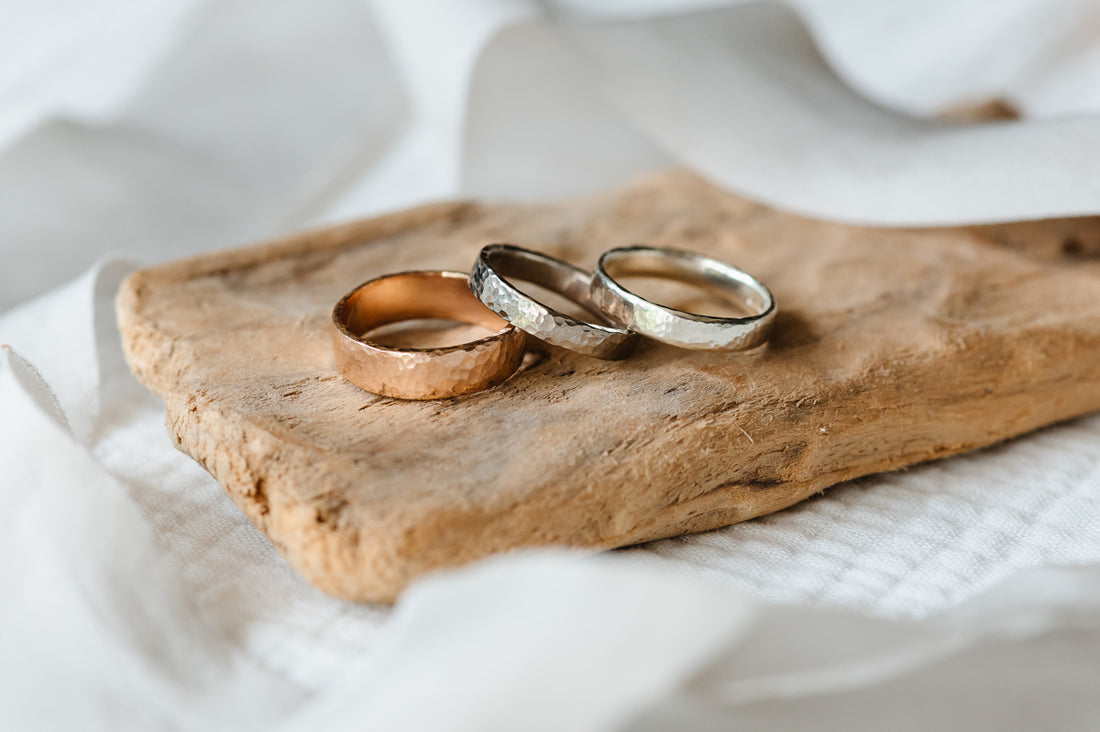Plate, basically, is a very thin layer of metal, normally put over a different, often cheaper metal base. Various different types of plate are used in jewellery for different reasons.
This week I ran into a couple of inexplicable types of plating which has inspired this rant. I bought a couple of 9ct gold chains which were plated in a higher carat of gold (why??) and I ran across some rhodium plated silver jewellery, which I also think is a bit of an odd choice.
Plating is always a thin layer, and that gives anything plated a limited life span before it wears through and changes colour. If you are thinking about the sustainability of any item, then the longer you can use it for the better. Solid precious metals are always going to be the best option, longer lasting, more likely to be repairable and recyclable.
A huge chunky piece in 18ct gold could well be thousands of pounds, so plate might be the only option. If you want to minimise waste, understanding what you are buying is a crucial part of that.
If you decide to buy something with a temporary surface, just try to be gentle with it, and store it out of the air when not being worn. Also try not to wear it when doing anything messy, all polishing and cleaning will affect how long the surface lasts.
If I was queen of everything I wouldn’t immediately outlaw all plate, but I would advise avoiding it if possible.

Hammered, unplated 9ct white gold
Silver plate
Personally, I think silver plate jewellery should be avoided at all costs. Silver is the cheapest of the precious metals and particularly when bought from independent makers can be very affordable. I have come across some very expensive silver plate pieces in high street retailers, and it’s really not good value.
Silver also tarnishes when left unattended in the open air for a while. This isn’t a problem for solid pieces so much as they can be polished back to a shine, but with plate repeated polishing is going to wear away the surface and expose the base metal beneath. Generally at this point things will just end up in the bin.
I have sometimes found people expect all silver to go black over time, and I think this is a misunderstanding that comes from not clearly differentiating plate, which will wear though, and solid silver.
Rhodium plating
White gold in the UK is normally sold plated in rhodium which is a bright white, more similar to sterling silver but really cold. Underneath the plating 9ct white is mostly made up from silver and gold, so is a soft warm white. 18ct is generally mixed with palladium so is darker and more steely, like platinum but with a brownish tinge in some lights.
Rhodium plating lasts somewhere between 6 months and 2 years depending on how the piece is treated. If you have a job which involves a lot of hand washing or is quite tough on your hands the rhodium isn’t going to last so long if you don’t take your ring off.
I get emails from people who have white gold rings and aren’t aware of the plating and don’t understand what is happening when the plate starts to wear off, although it is very widespread it isn’t necessarily well understood.
Personally I think that both carats of white gold look nice without the plate, and that will save you the long term maintenance. If you are matching another plated ring I would still advise going for the same carat, or you are committed to very regular plating if you want the rings to match.
Replating is available from most high street jewellery stores (not from me I don’t have the equipment) so it is at least possible to replace it. The only time I would really advise rhodium plate is for high maintenance rings that are delicate and covered in tiny diamonds, these should really be looked at regularly anyway, so regular plating is just part and parcel of what are high maintenance pieces.

Vermeil
Vermeil is sterling silver plated in gold, normally quite a high carat gold. It is therefore going to go from bright yellow to a kind of messy silver colour over time.
I think it possibly is slightly more sustainable than gold plate on base metal, in that the silver is more valuable and therefore more likely to be recycled rather than just binned when the gold colour wears off. It could also be polished and just worn as silver rather than gold, but I do wonder how often this happens.
Filled Gold
Filled gold has a base metal core, and a thicker layer of gold to the outside than is normal for other types of plate. It does last longer, sometimes for several years so can be a good option if solid gold is not an option for budget reasons, but it does have a limited life span.
